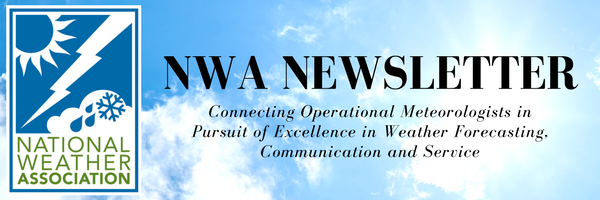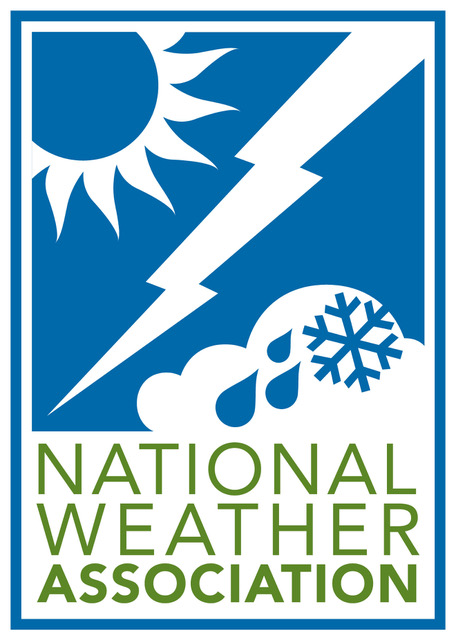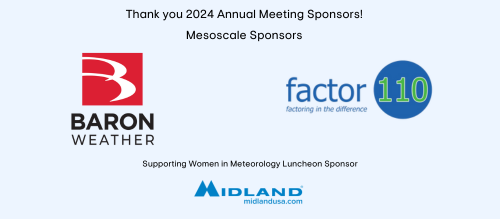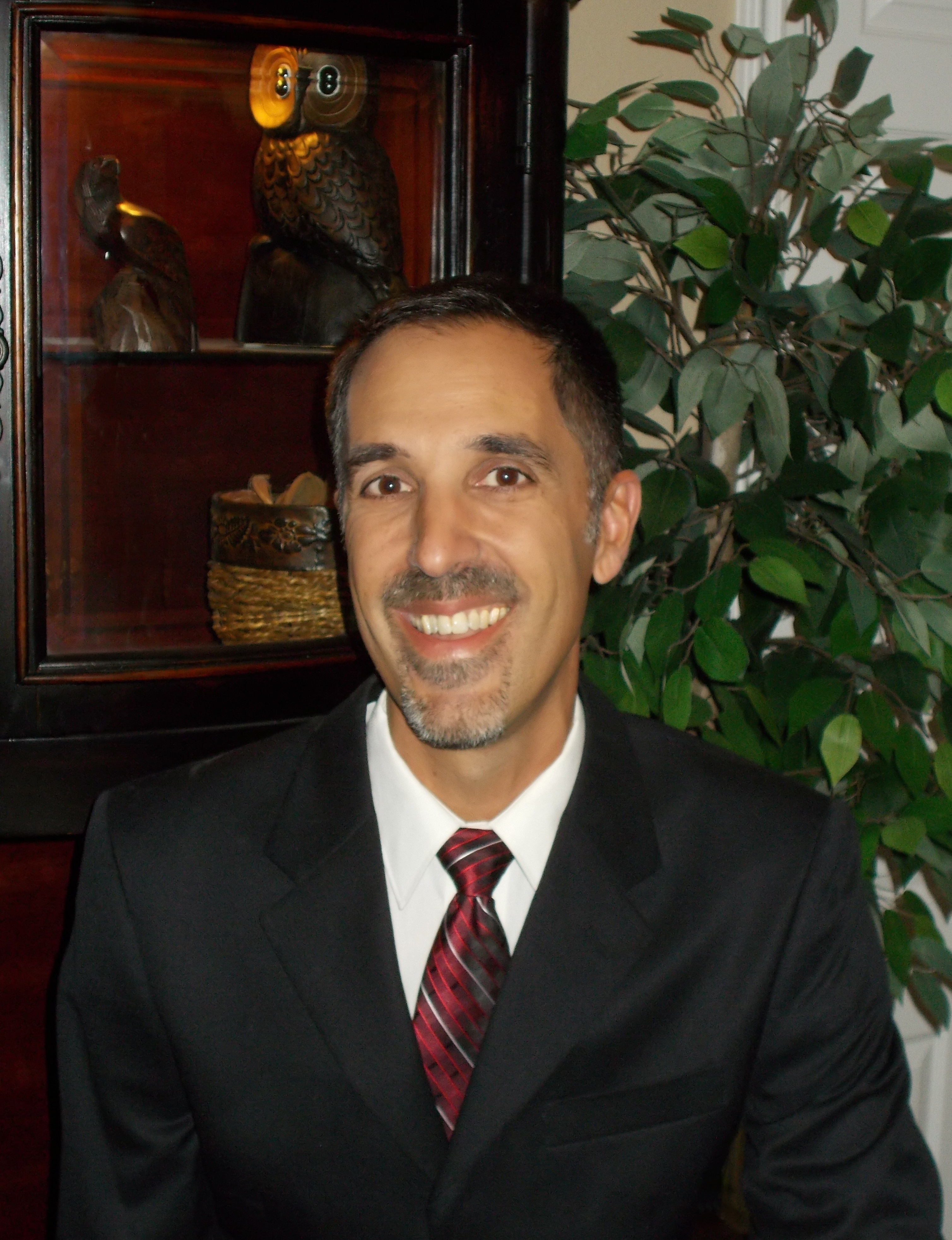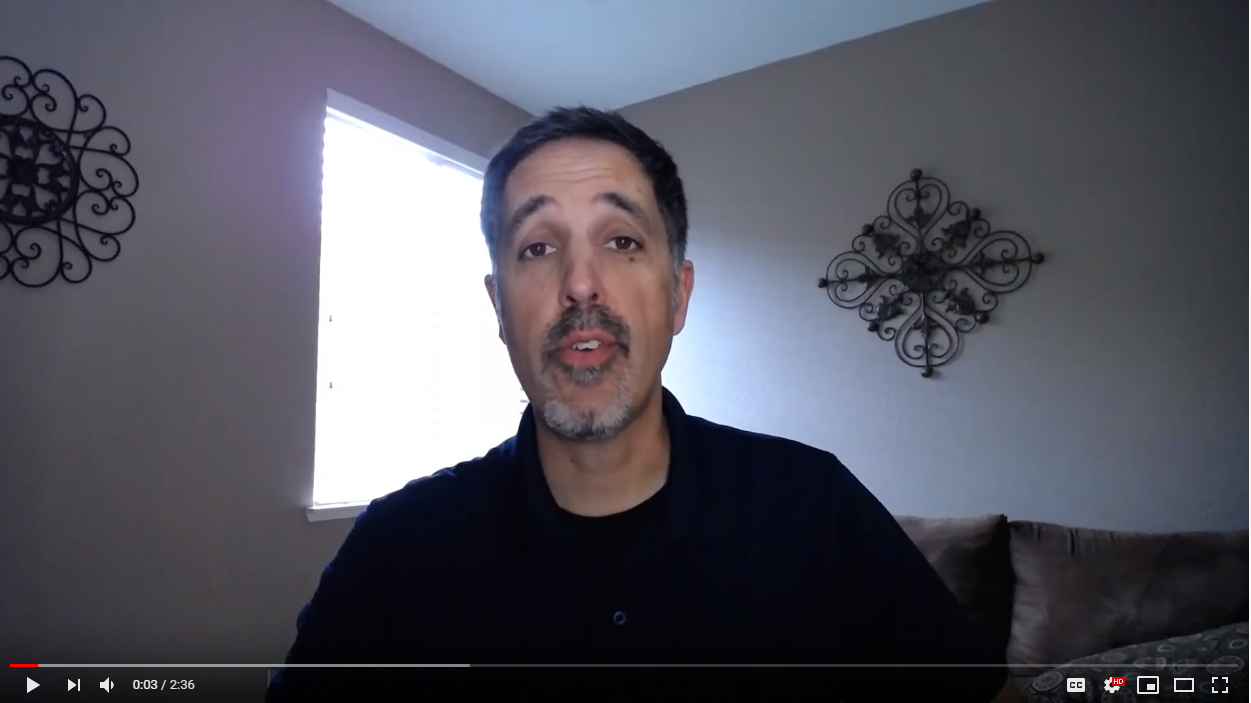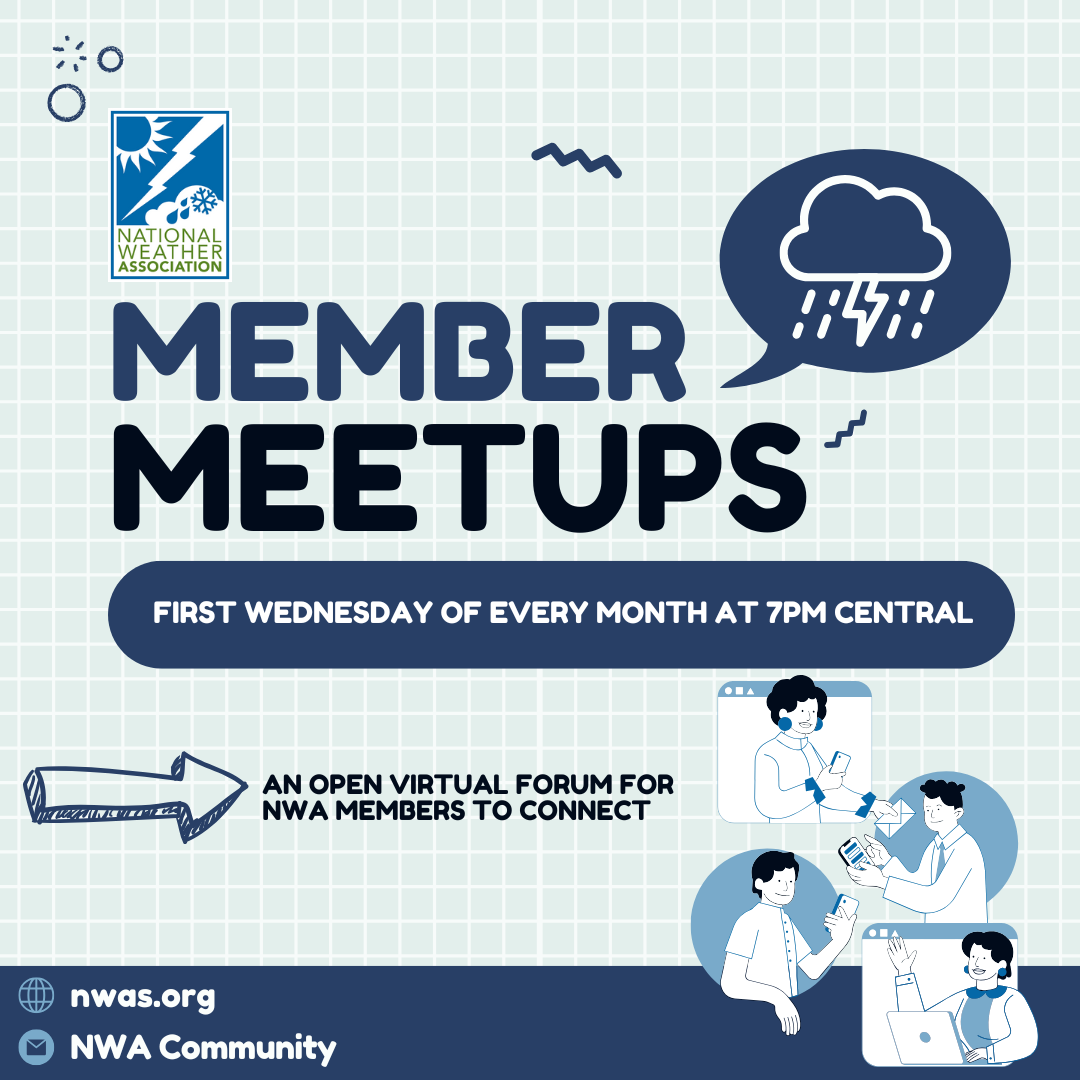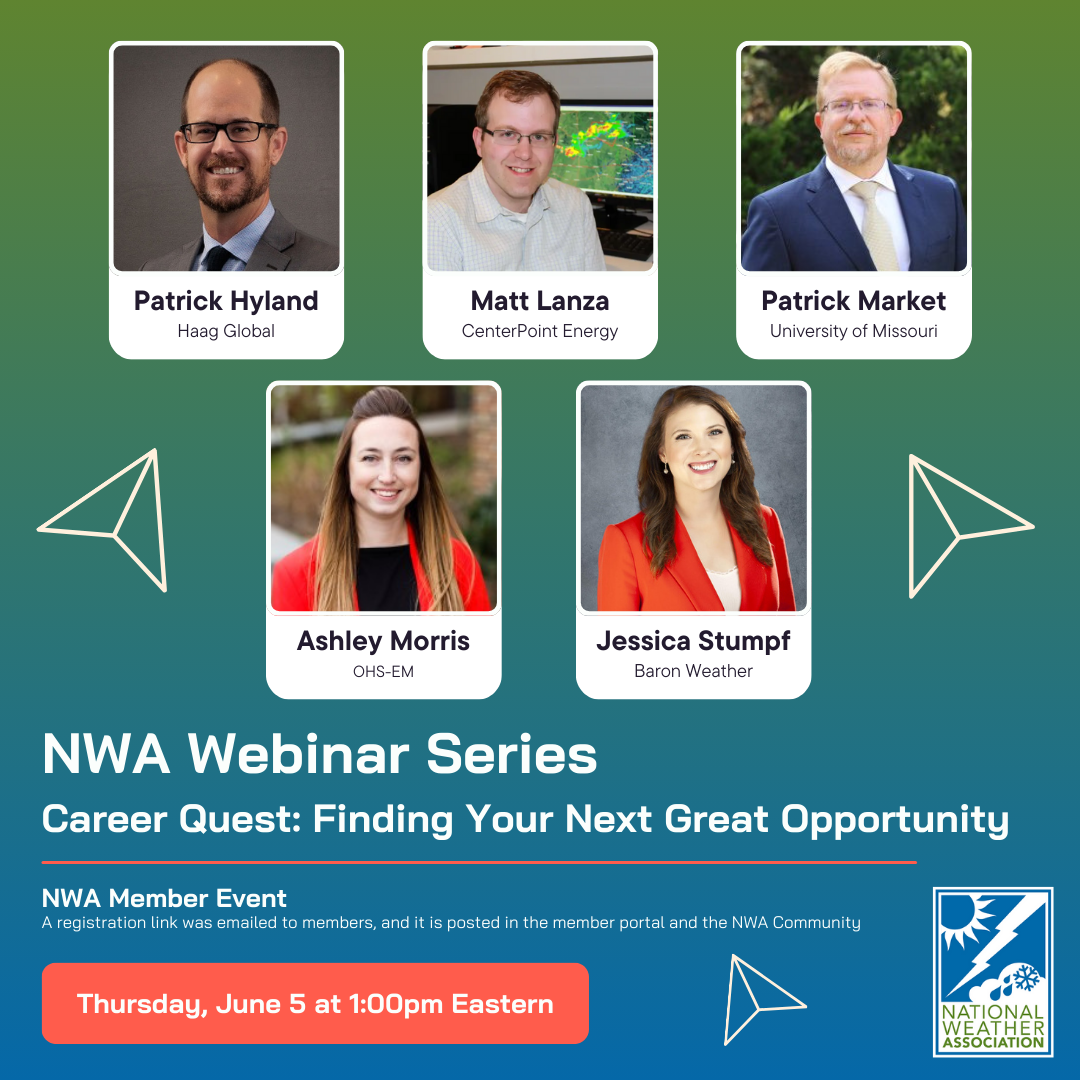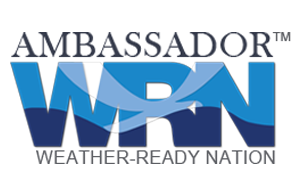Return to Top
Improving Prejudicial and Stigmatized Views towards Autistic People in the Weather Enterprise
by Matthew J. Bolton, College of Arts and Sciences, Saint Leo University
and Stacie H. Hanes, National Weather Service, Gray, Maine
A hundred years ago, people with individual differences of the mind were labeled “mentally deficient.” For many—including autistic individuals who have difficulties in social communication, unusually narrow interests, repetitive behavior, and sensory sensitivities—the outcome was involuntary institutionalization and even sterilization.
As science advanced, so too did beliefs about helping such individuals. Treatment, however, was often in the form of ice pick lobotomies and electro-shock therapy—nothing less than torture or, at worst, a death sentence. Now, with roughly 3.5 million Americans on the autism spectrum (Baxter et al. 2014) and as we mark Autism Awareness-Acceptance Month 2020 (April), societal views towards the condition truly are changing. In light of the oft-observed finding that mental conditions are stigmatized much more often than those of a physical nature (e.g., Michaels et al. 2012), and that these biases extend to the workplace (Jans et al. 2012), is the weather enterprise keeping up?
Lest we be left behind, weather professionals must recognize that diversity encompasses many more variables than just race and gender, and must, acknowledge and then work to change their own biases against autistic and other neurodiverse individuals. This starts with changing the terms we use to reference autism (e.g., using the less-stigmatizing “autism spectrum condition” (ASC) instead of “autism spectrum disorder”; see Bolton 2018).
Then it is contact theory, not anti-bias training (which doesn't work; see Belluz 2018), that may provide the best framework for this endeavor. Psychologist Gordon Allport hypothesized (Allport 1954; see Everett 2013 for detailed discussion) that prejudice could be significantly reduced by motivated interpersonal contact.
There is increasing evidence that even unstructured contact, outside the scope of Allport’s framework, facilitates reduction of negative views. Even simply imagining the contact appears to help. Moreover, an emerging body of evidence suggests contact might reduce tendencies to pit one side against another, may increase perceptions of similarity, and may induce empathy towards those from whom we feel different.
Differences in autistic neurology are not linear—the spectrum is not a sliding, left-to-right scale with clear delineations of severity or trait occurrence. Autistic individuals typically have strengths in one or several areas of functioning alongside co-occurring weaknesses elsewhere. Nevertheless, they can contribute greatly to the weather enterprise, and many already do unbeknownst to their colleagues!
There is ample research evidence of connections between autism and science, including the finding that meteorologists score highly on tests of autistic traits (Bolton et al. 2018). Further research (Bolton et al. 2020) on connections between autism, weather salience (psychological attention to weather), and weather interest suggest enhanced outreach efforts to autistic people may bring new faces into the meteorological field.
In meteorologists the ASC strength-weakness dichotomy may mean, for example, skills in programming or weather map analysis at the expense of weaker social skills. The weather enterprise should note that autistic people are more often than not intelligent; many are detail-oriented and conscientious in their work, and possess the ability to readily find patterns and anomalies in data. With appropriate accommodations and training to assist their learning of the ins and outs of communicating within operational meteorology, many autistic people could be well-suited to forecaster positions in the government or private sectors.
How can autism-oriented stigma and prejudice in the meteorological workplace be ameliorated? Additional training on autism, ideally facilitated by autistic people who can speak to and reflect on lived experiences rather than assumptions of the condition (Sarrett 2017), can go a long way towards increasing knowledge for non-autistic co-workers and supervisors. For example, NWS forecaster Kevin Huyck, himself on the spectrum, gave a presentation about the ways autism can affect communication and how it can be accommodated in the NWS environment. It is important to respect these individuals, recognizing their workplace needs are as valid as those of neurotypical people, and embracing their voices is a strong step forward in that endeavor. Ultimately, the weather enterprise needs all kinds of minds, and overcoming personal prejudices while embracing individuals with different strengths is important to realizing a more diverse, stronger weather enterprise.
Acknowledgements
The authors contributed equally to the conceptualization and writing of the manuscript. MJB, an autistic individual with over a decade of experience and study in professional meteorology and a member of the National Weather Association’s Diversity Committee, was supported academically during the period of this work by a Graduate Fellowship sponsored by the U.S. National Weather Service and awarded by the American Meteorological Society. The opinions, conclusions, and/or recommendations expressed here are those of the authors and do not necessarily reflect the views of the National Weather Service or American Meteorological Society. Correspondence for this article should be addressed to Matthew Bolton at [email protected].
References
Allport, G. W., 1954: The nature of prejudice. Addison-Wesley.
Baxter, A. J., T. S. Brugha, H. E. Erskine, R. W. Scheurer, T. Vos, and J. G. Scott, 2014: The epidemiology and global burden of autism spectrum disorders. Psychol. Med., 45, 601–613, https://doi.org/10.1017/s003329171400172x
Belluz, J., 2018, May 29: Companies like Starbucks love anti-bias training. But it doesn’t work – and may backfire. Available at https://www.vox.com/science-and-health/2018/4/19/17251752/philadelphia-starbucks-arrest-racial-bias-training
Bolton, M. J., 2018: With the silence of a thousand cries: Extremes of autistic advocacy. Dis. Soc., 33, 980–984. https://doi.org/10.1080/09687599.2018.1454381
Bolton, M. J., L. K. Ault, D. M. Greenberg, and S. Baron-Cohen, 2018: Exploring the human side of meteorology: A brief report on the psychology of meteorologists. J. Oper. Met., 6, 23–32. https://doi.org/10.15191/nwajom.2018.0603
Bolton, M. J., W. G. Blumberg, L. K. Ault, H. M. Mogil, and S. H. Hanes, 2020: Initial evidence for increased weather salience in autism spectrum conditions. In press. Weat. Clim. Soc. Preprint available at https://doi.org/10.31234/osf.io/pbh4v
Everett, J. A. C., 2013: Intergroup contact theory: Past, present, and future. Available online at https://www.in-mind.org/article/intergroup-contact-theory-past-present-and-future
Jans, L. H., H. S. Kaye, and E. C. Jones, 2012: Getting hired: Successfully employed people with disabilities offer advice on disclosure, interviewing, and job search. J. Occ. Rehab., 22, 155–165. https://doi.org/10.1007/s10926-011-9336-y
Michaels, P. J., M. López, N. Rüsch, and P. W. Corrigan, 2012: Constructs and concepts comprising the stigma of mental illness. Psychol. Soc. Ed., 4, 183–194.
Sarett, J., 2017: Interviews, disclosures, and misperceptions: Autistic adults’ perspectives on employment related challenges. Dis. Stud. Quart., 37.
Return to Top
NWA 2020 Awards Nominations
by Lara Pagano, NWA Awards Committee Chair
It's that time of the year again for NWA 2020 Awards Nominations. Hindsight is "2020" and, looking back, do you want to reward someone you know for a job well done? The NWA is responsible for selecting various awards that highlight the amazing contributions made within or related to the field of meteorology. If you know individuals, teams or organizations whose outstanding efforts in operational meteorology and related sciences deserve special recognition, we highly recommend you consider them for an NWA 2020 Award.
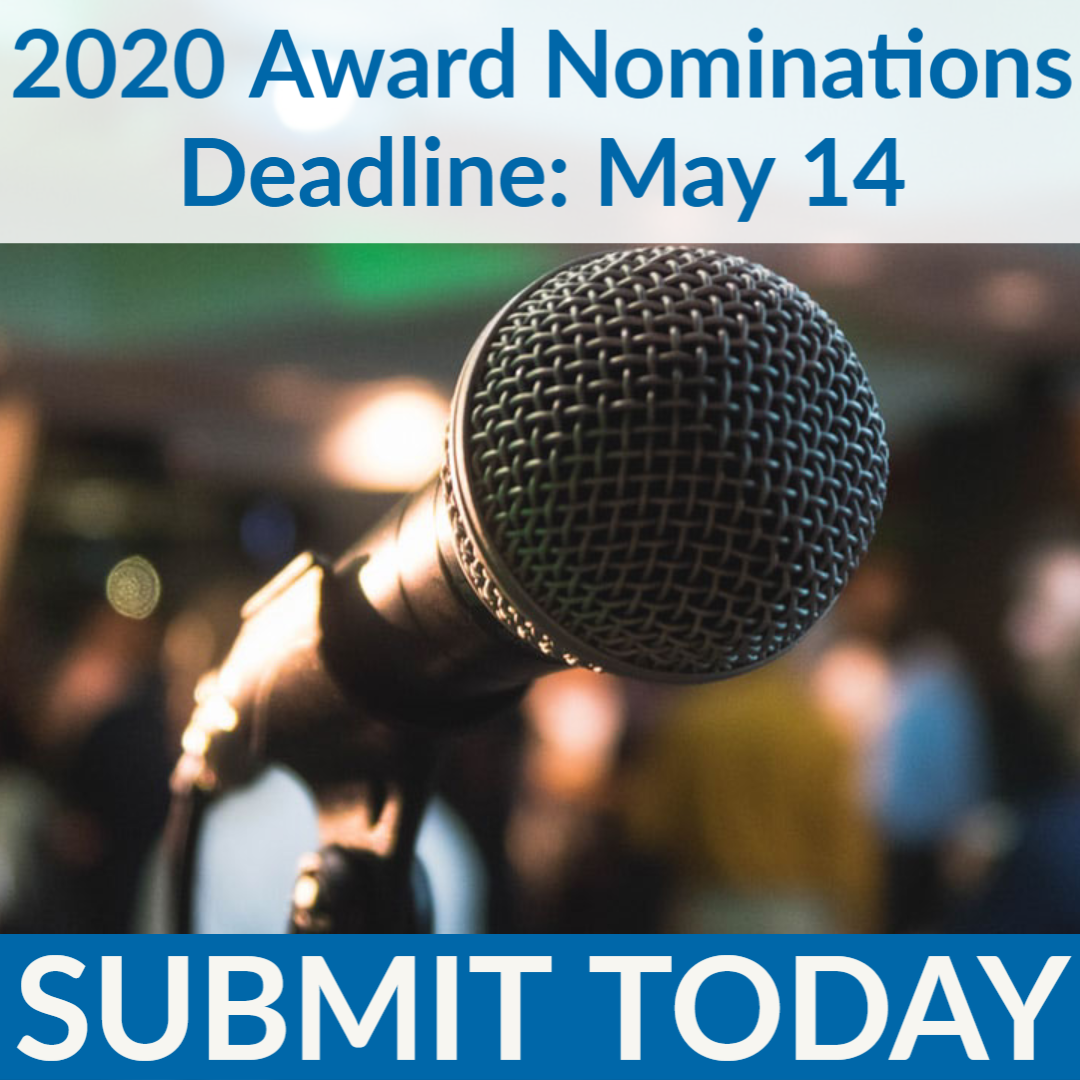
In an effort to streamline the nomination process, the NWA Award Committee has developed a new Nomination Form that will make the nomination process even easier. The nomination deadline is May 14, so get those nominations in before it is too late! Submit here.
Return to Top
Participate in #SafePlaceSelfie Day on April 8
by Morgan Barry, NWA Social Media Committee Chair
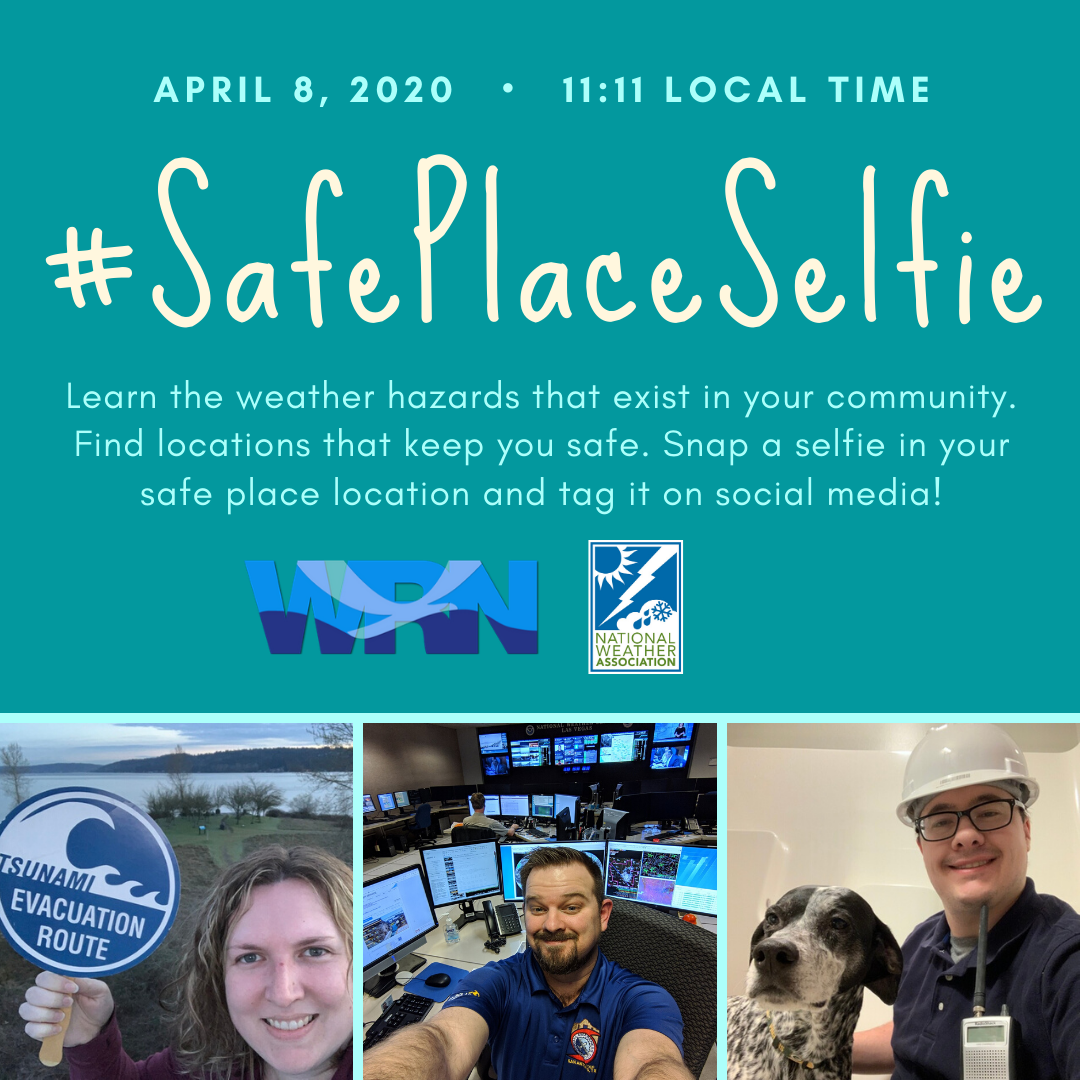
If there was one extreme weather preparedness action you want your loved ones to take, what would it be? The NWA Social Media Committee, alongside a team from the National Weather Service and Federal Emergency Management Agency, asserts that finding your safe place from extreme weather is one of the most important preparedness actions you can take.
Join us on April 8, 11:11 am local time, by taking a picture of yourself in your safe place and post it on Twitter using #SafePlaceSelfie.
More at weather.gov.
Return to Top
Recap of March Weather Events
by Nicole Van Every, NWA Administrative Assistant
From devastating tornadoes to record-high temperatures, the U.S. has already seen its share of significant weather this season. Here are some of last month’s weather-headline highlights. Our thoughts go out to all those affected by the storms and those providing warnings and forecasts during these challenging times.
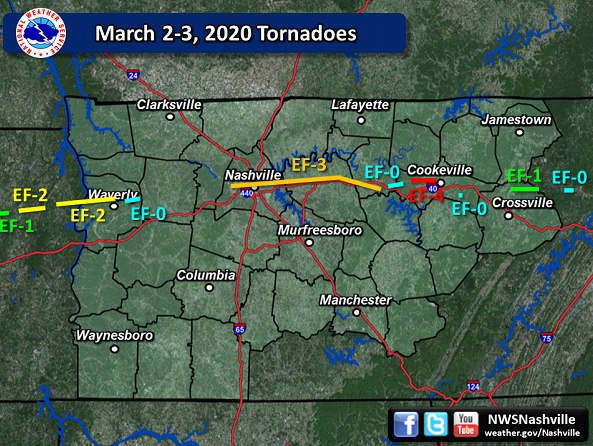
Just one day after the start of meteorological spring, several states experienced a series of devastating storms on March 2-3. Tornadoes across Middle Tennessee resulted in numerous injuries and fatalities, including an EF-3 in the Nashville metro area and an EF-4 in Putnam County. For the latest summary from the NWS, click here.
Ohio and Indiana saw flooding rains over several days. On March 20, six were killed when waters swept across a bridge over Sanes Creek in Indiana. Columbus, Ohio, recorded 2.88 inches of rain on the same day, setting a new record.
March 26 felt more like July for many across the south, as record high temperatures were shattered across the region. Hollis, Oklahoma, reached the 100-degree mark—the highest temperature ever recorded in the state for the 26th of March.
Over 100 hail reports came in across portions of Oklahoma and Missouri on March 27—some reported stones measured at least 4 inches. Watch a video of it falling near Jay, Oklahoma here.
March 28 marked the Storm Prediction Center’s first Moderate Risk of the 2020 spring season. Several tornadoes touched down from Iowa to Arkansas, the most notable being the EF-3 in Jonesboro, Arkansas. Click here to watch footage.
March closed with damaging winds and tornadoes across portions of the Southeast on March 31. Read more here.
Return to Top
COMET Quarterly Announcement Spring 2020
by David Russi, UCAR/COMET Translation Coordinator
Greetings from Boulder, Colorado! These are difficult times for all of us, wherever we may be. At COMET, we have taken measures to protect our safety and wellbeing and those of the people around us while continuing to serve you in the best way that we can.
Below you will find links to COMET’s latest additions to the library of materials we host on MetEd, designed to support a variety of training needs in the geosciences. COMET published four new lessons this quarter, two on satellite products, one on cloud hydrometeors and particles (part of a continuing series on measurement and instrumentation), and one on weather-ready nations. We also published two new lessons in Spanish, and seven in French.
All of us at COMET thank you for using our training materials. Stay safe.
New COMET Lessons in English
Satellite Jet Analysis
Using Merged Satellite Precipitation (CMORPH and IMERG) Guidance
Instrumentation and Measurement of Cloud Hydrometeors and Airborne Particles
The Weather, Water, and Climate Enterprise: Enhancing Science, Service and Partnerships for a Weather-Ready Nation
New COMET Lessons in Spanish:
Teledetección por microondas: aplicaciones de vapor de agua, nubes y precipitación
Los instrumentos y la medición de los gases traza atmosféricos
New COMET Lessons in French:
Le diagnostic de fronts 1
Le diagnostic de fronts 2
Introduction à la modification des sorties de PNT
La modification des PNT par comparaisons des variables intégrées sur la colonne
La modification des PNT par comparaisons directes
Introduction au tourbillon potential
La modification du tourbillon potential
Currently, these materials are freely available to everyone, courtesy of our primary sponsors: NOAA's NWS, NESDIS and National Ocean Service programs, EUMETSAT, the Naval Meteorology and Oceanography Command, the Meteorological Service of Canada, Bureau of Meteorology, the U.S. Army Corps of Engineers, and the Department of the Interior Bureau of Reclamation.
Return to Top
Spring Scholarships & Grants Now Open
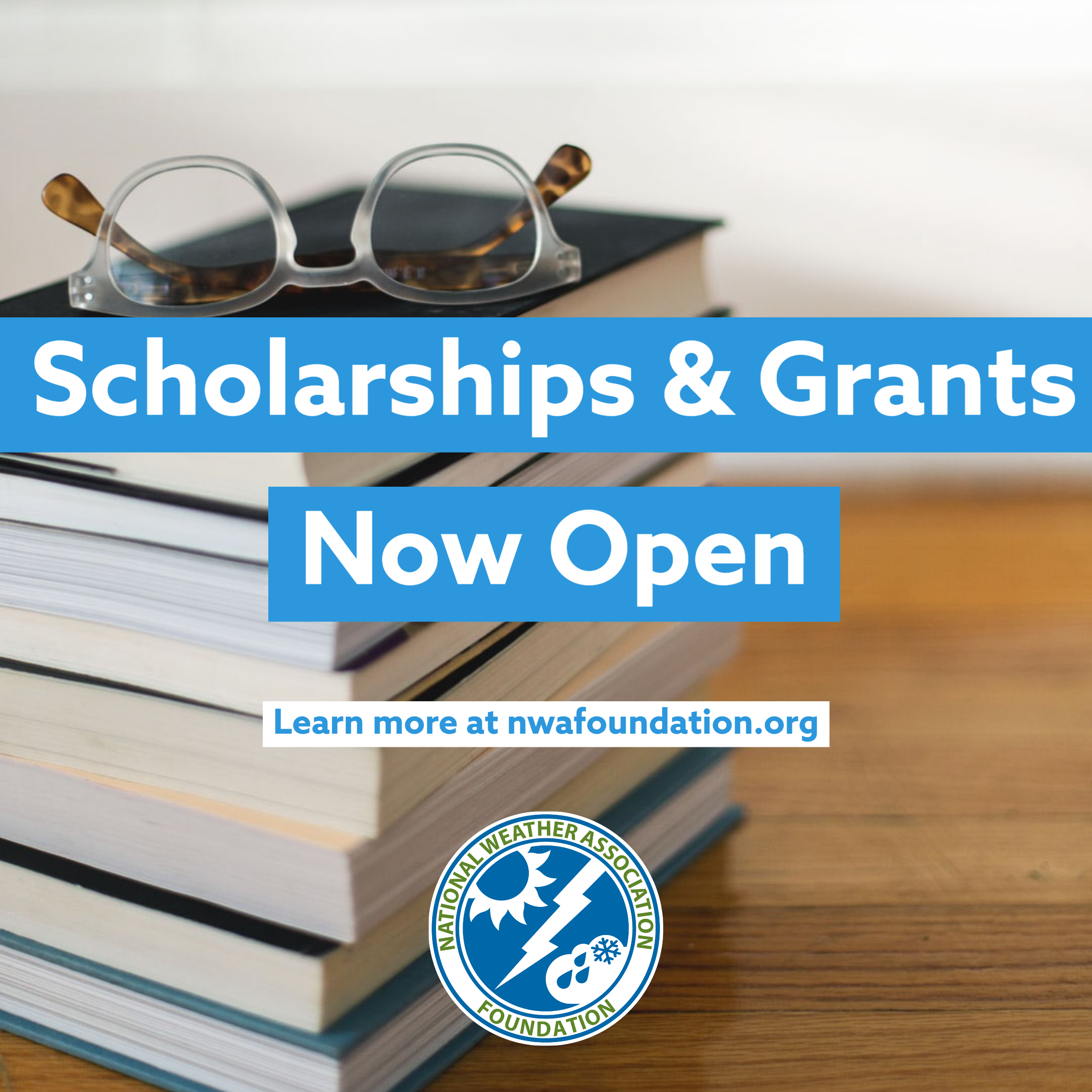
Learn more at nwafoundation.org!
The full NWA Event Calendar is located in Member Connect.
Return to Top
Introducing NWA Distant Socials
by Trevor Boucher, NWA Social Media Committee

We know it's tough having to practice social distancing through this COVID-19 situation, but that doesn't mean we can't be social at a distance. (see what we did there?)
Introducing our new NWA Distant Socials! Every week as we all practice isolating to fight this pandemic, we will hold open virtual chats via Google Meet so you can stay in touch with fellow NWA members and friends.
Just log into your Member Connect profile and click the link on the main page to join our next virtual call!
These are our Distant Socials rules and guidelines:
What are these?
Open Google Meet video chats hosted by the National Weather Association are meant simply to allow members to socialize with fellow members. These video conferences are open to all members and meant to be informal and fun.
Why are we doing this?
Due to the COVID-19 pandemic, we’ve all been urged to practice social distancing and significantly limit physical interactions with our friends and family members. The National Weather Association fully supports and encourages our members to practice social distancing so we can all do our part to battle the spread of this virus in our communities. However, we also acknowledge this can be extremely tough from a mental and emotional standpoint. We hope these social events can be used as a way to stay in touch with your fellow members in a fun and informal way while we all go through
these tough times.
How it works…
The NWA will host Google Meet sessions that will be open to all members every week through the length of this pandemic.
To join,
1. Log into your NWA profile through Member Connect at nwas.org.
2. A link for our “Distant Socials” will be available on the main page in
Member Connect.
3. Simply click on the link at the scheduled start time and ask to join
the call (a webcam and microphone are recommended).
Guidelines and Etiquette for Participating in Distant Socials
● Have fun but be courteous and respectful. The socials are meant to be informal with open and candid discussion about any topic, however any disrespectful behavior or derogatory comments will not be tolerated. If this occurs, you will be asked to leave or be removed.
● Don’t attack others. The discussions on these socials are meant to
stimulate conversation not to create contention. Let others have their say, just as you may.
● These events are meant to be a safe place to share. Some members may want to share some personal stories or challenges they are going through during this situation. Please respect member’s privacy and keep these discussions within the call.
● Please mute yourself if you are not speaking. These calls can hold as many
as 100 participants at once and if you are unmuted, this can become cumbersome to follow along. Please mute yourself or the call moderator will mute you so everyone can hear and participate.
● Come with topics to discuss with your fellow members. Feel free to come with topics you’d like to bounce off your colleagues. Have an idea to pitch to NWA leadership? Have a project you're working on and want feedback? Want to get some tips on effective teleworking? Anything goes!
The Legal Stuff
These social events are provided as a courtesy of the National Weather Association (NWA). The NWA does not necessarily endorse or support the opinions or discussions that may arise during these events.
Do not use any defamatory, abusive, profane, threatening, offensive, or illegal materials or
language. Do not share any information or other material protected by copyright law. NWA leadership may not always actively monitor these discussions for inappropriate or shared content and do not on their own undertake editorial control if they occur. However, in the event that any inappropriate behavior is brought to the NWA’s attention, the NWA will do their best to remove the offending party.
Return to Top
March Webinar: "What We Learned from the Australian Wildfires and Applications to Fire Weather Forecasting"
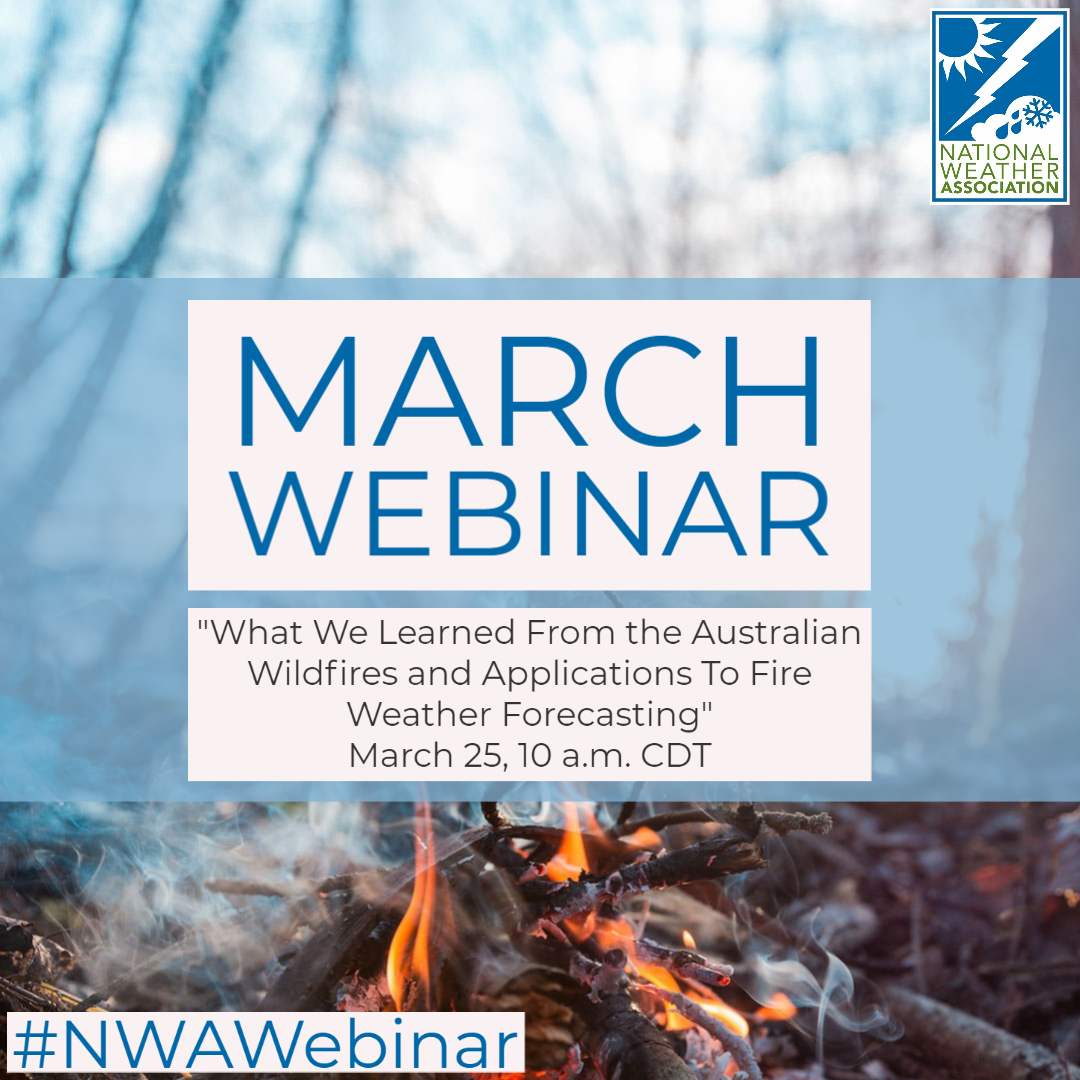
Catch up on our latest webinar on "What We Learned From the Australian Wildfires and Applications to Fire Weather Forecasting," featuring speakers Mark Struthwolf, Tamara Wall, Sarah Jakober.
Watch here.
Return to Top
New Article in the Journal of Operational Meteorology
